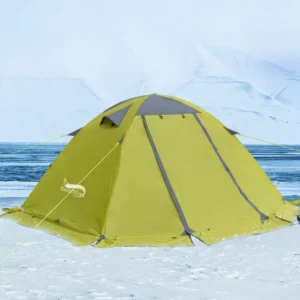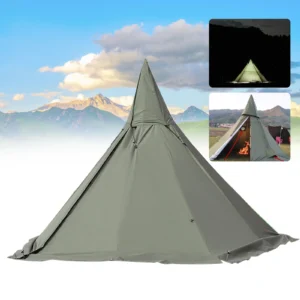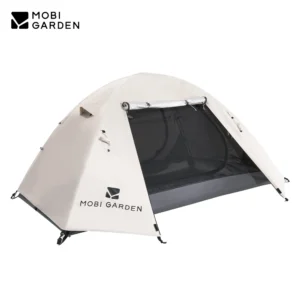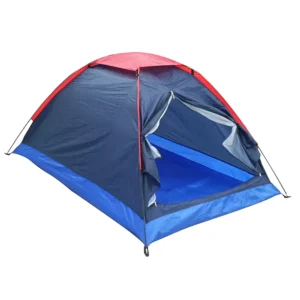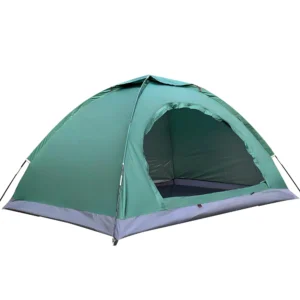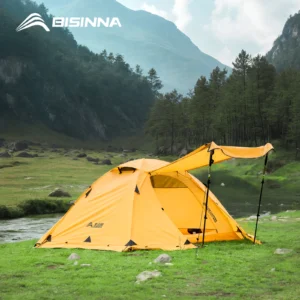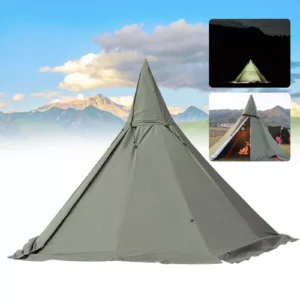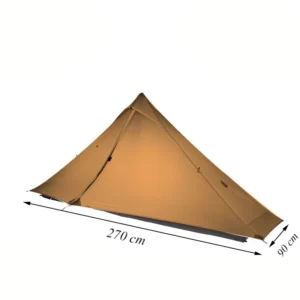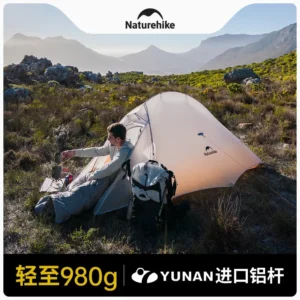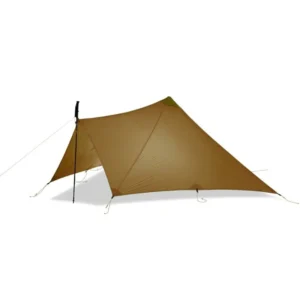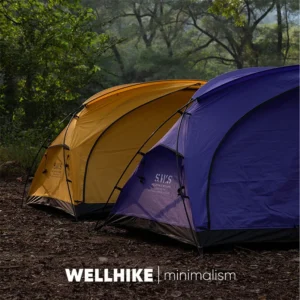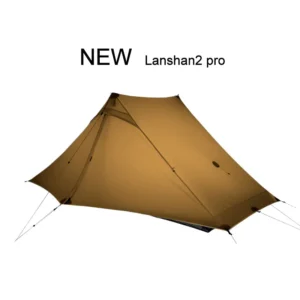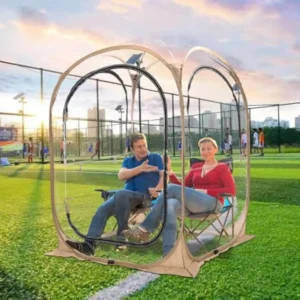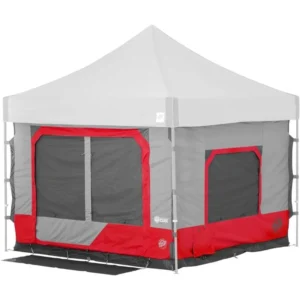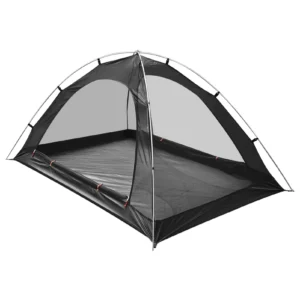Trekking Pole Backpacking Tent
Lighten your pack with trekking pole backpacking tents. These use your existing hiking poles for support. You’ll shed serious pack weight, perfect for ultralight thru-hikes and fast packing.
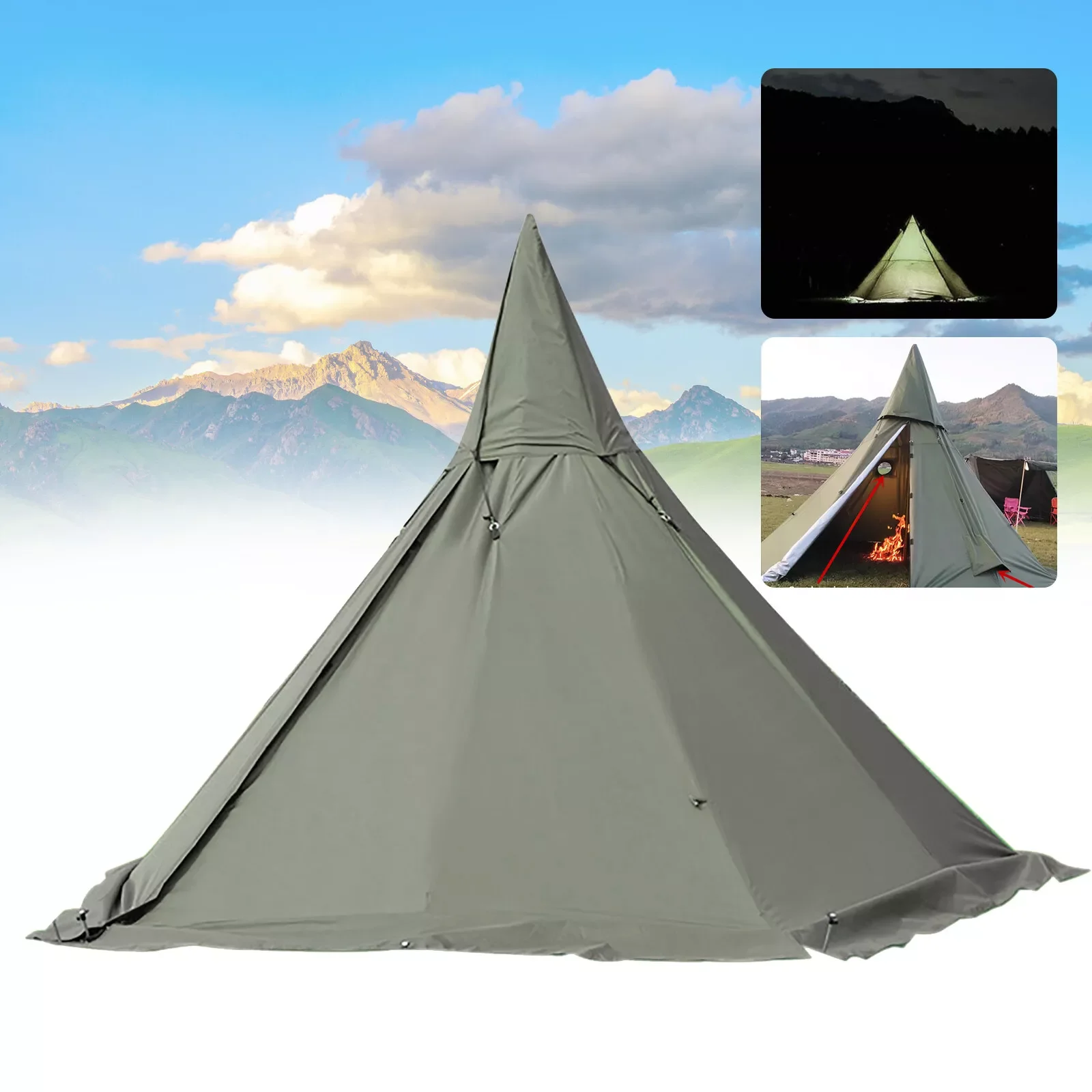
Showing 1–12 of 38 results
Heavy Duty 4 Season Tent, Trekking Pole Backpacking Tent, Winter Camping Tent
Price range: $424.76 through $440.41 Select options This product has multiple variants. The options may be chosen on the product pageHeavy Duty 4 Season Tent, Trekking Pole Backpacking Tent, Waterproof Camping Tent
$435.45 Select options This product has multiple variants. The options may be chosen on the product pageBackpacking Tent with Vestibule, Trekking Pole Backpacking Tent, Waterproof Camping Tent
$235.32 Select options This product has multiple variants. The options may be chosen on the product pageEasy Setup Camping Tent, Trekking Pole Backpacking Tent
$142.40 Select options This product has multiple variants. The options may be chosen on the product pageLightweight Backpacking Tent, Trekking Pole Backpacking Tent, Waterproof Camping Tent
Price range: $171.12 through $173.16 Select options This product has multiple variants. The options may be chosen on the product pageHeavy Duty 4 Season Tent, Trekking Pole Backpacking Tent, Winter Camping Tent
$491.84 Select options This product has multiple variants. The options may be chosen on the product pageHeavy Duty 4 Season Tent, Trekking Pole Backpacking Tent, Winter Camping Tent
$408.59 Select options This product has multiple variants. The options may be chosen on the product pageLightweight Backpacking Tent, Trekking Pole Backpacking Tent, Ultralight Backpacking Tent, Ultralight Trekking Pole Tent
Price range: $471.85 through $478.11 Select options This product has multiple variants. The options may be chosen on the product pageLightweight Backpacking Tent, Trekking Pole Backpacking Tent, Ultralight Backpacking Tent, Winter Camping Tent
$1,353.20 Select options This product has multiple variants. The options may be chosen on the product pageLightweight Backpacking Tent, Trekking Pole Backpacking Tent, Ultralight Trekking Pole Tent
Price range: $355.90 through $367.93 Select options This product has multiple variants. The options may be chosen on the product pageLightweight Backpacking Tent, Trekking Pole Backpacking Tent, Waterproof Camping Tent
Price range: $472.50 through $475.42 Select options This product has multiple variants. The options may be chosen on the product pageLightweight Backpacking Tent, Trekking Pole Backpacking Tent, Ultralight Backpacking Tent, Ultralight Trekking Pole Tent
Price range: $1,129.41 through $1,176.33 Select options This product has multiple variants. The options may be chosen on the product page
Showing 1–12 of 38 results
Understanding Trekking Pole Tents
Trekking pole tents represent an innovative approach to backcountry shelter that differs significantly from traditional tents. Instead of relying on dedicated tent poles, these shelters use your existing trekking poles as their primary structural support. This clever design eliminates the need to carry separate tent poles, which significantly reduces pack weight—a priority for many serious hikers.
The concept is elegantly simple: your trekking poles—positioned either vertically or at angles—create the tent’s framework. Most designs feature attachment points specifically engineered to secure pole tips at strategic locations, creating stable structural support that withstands wind and weather when properly tensioned.
The primary appeal to hikers is three-fold:
* Weight savings of 8-16 ounces (227-454 grams) compared to pole-based designs
* Multipurpose gear utilization (poles serve dual functions)
* Significantly reduced pack volume
This shelter style has gained tremendous popularity among ultralight backpackers and long-distance thru-hikers who count every ounce. On trails like the Pacific Crest Trail or Appalachian Trail, where hikers might cover thousands of miles, these weight savings compound over time, reducing fatigue and increasing comfort.
Key Benefits of Trekking Pole Shelters
Remarkable Weight Reduction
Trekking pole shelters typically weigh between 1-2 pounds (0.45-0.9 kg), compared to traditional freestanding tents that often weigh 3-5 pounds (1.4-2.3 kg). This 50-70% weight reduction represents one of the most significant ways to lighten your overall pack weight.
Enhanced Packability
Without rigid poles, these tents compress extraordinarily well, often packing down to the size of a water bottle. This compact footprint frees up valuable space in your backpack for food, water, or other essentials.
Gear Multi-Functionality
By using your trekking poles to support your shelter, you eliminate redundant equipment. This dual-purpose approach epitomizes the ultralight philosophy of making each item serve multiple functions.
Impressive Space-to-Weight Ratio
Many trekking pole tents offer surprising interior volume relative to their minimal weight, with clever designs that maximize headroom and usable space.
Versatile Pitch Options
Most designs allow for a fly-first setup, enabling you to establish shelter before exposing your inner tent to rain—a significant advantage in wet conditions. Some models can also be set up in multiple configurations to adapt to different environmental conditions.
Weather Performance
When properly pitched and tensioned, quality trekking pole tents deliver excellent stability in challenging conditions, often outperforming heavier freestanding designs in high winds due to their low-profile, aerodynamic shapes.
Important Considerations Before Purchasing
Dependency on Trekking Poles
The most obvious limitation is that you must carry trekking poles. If you’re not already a pole user, this necessitates adopting them into your hiking style. Additionally, if a pole breaks, you’ll need a backup solution to maintain shelter integrity.
Non-Freestanding Nature
Unlike traditional tents that can stand freely, trekking pole shelters require proper staking and tensioning to remain upright. This presents challenges on hard surfaces like rock, wooden platforms, or extremely compacted soil where stakes struggle to penetrate.
Setup Learning Curve
First-time users often find the setup more complex than freestanding alternatives. Achieving proper tension and symmetry requires practice, especially in challenging conditions like high winds or rain.
Interior Space Considerations
Many designs feature steeply sloped walls that reduce usable interior space compared to what the floor dimensions might suggest. This can affect comfort, especially for taller individuals or when sheltering for extended periods during storms.
Condensation Management
Single-wall designs (common in this category) face greater condensation challenges than double-wall alternatives. Without separate inner and outer layers, moisture management becomes more critical to prevent gear from becoming wet.
Premium Materials, Premium Price
The ultralight materials used in quality trekking pole tents often command higher prices than their heavier counterparts, despite containing less material overall.
Essential Selection Criteria
Weight and Packed Size
The primary appeal of these shelters is their minimal weight, typically ranging from 15-32 ounces (425-907 grams). Consider both the listed weight and “trail weight” (excluding stakes, stuff sacks, and optional components).
Capacity and Dimensions
Carefully assess interior dimensions beyond simple square footage. For two-person models, check width at both ends and peak height location. Many “two-person” designs are comfortable for one person plus gear but tight for two larger adults.
Material Considerations
Three primary fabrics dominate this category:
* Silnylon: More affordable, slightly heavier, stretches when wet
* Silpoly: Minimal stretch when wet, excellent UV resistance
* Dyneema Composite Fabric: Ultralight, waterproof, no stretch, but most expensive
Structural Design
Single-wall designs save weight but face condensation challenges. Double-wall models add inner mesh but increase weight and complexity. Consider your typical camping conditions when choosing between these options.
Weather Performance
Assess wind stability, storm resistance, and ventilation options. Look for reinforced stress points, adjustable vents, and adequate guyout points for stability in challenging conditions.
Setting Up Your Trekking Pole Tent
Practicing setup at home before field use is absolutely essential with these shelters. Site selection becomes critically important—look for level ground with soil that accepts stakes well. Avoid depressions where water might pool.
Most designs follow a similar sequence:
1. Stake out the main corners or perimeter
2. Insert trekking poles at designated points
3. Tension the ridgeline and main panels
4. Fine-tune guy lines and adjustments
For storm resistance, use all provided guylines, ensure even tension throughout, and position the tent to minimize wind exposure when possible. On challenging surfaces like sand or snow, use specialized stakes or improvise with rocks or buried objects as anchors.
Compatible Trekking Pole Features
Adjustable-length poles offer significant advantages over fixed-length models, allowing precise height matching to your tent’s requirements. Most shelters require poles set between 110-130 cm (43-51 inches), but always verify specific requirements for your model.
Material considerations include:
* Aluminum: More durable, slightly heavier, less expensive
* Carbon fiber: Lighter weight but potentially more fragile in extreme conditions
Locking mechanism reliability becomes paramount when your shelter depends on pole stability. Flick-lock or lever-lock systems generally maintain tension better than twist-lock mechanisms in long-term use supporting a shelter.
Trekking Pole Tents vs. Alternatives
Compared to freestanding tents, trekking pole shelters offer:
* Significant weight savings (1-3 pounds/0.45-1.36 kg lighter)
* Smaller packed size
* Often better wind performance when properly pitched
* More challenging setup on difficult surfaces
* Less forgiving setup process
Against other ultralight shelter options like tarps or hammocks:
* More enclosed protection than tarps
* Better insect protection
* More transportable than hammock systems
* Heavier than minimalist tarps
* More versatile across different environments
Is a Trekking Pole Tent Right for You?
Consider these questions when evaluating if a trekking pole tent suits your needs:
Do you already use trekking poles? If yes, these shelters complement your existing gear system perfectly.
How important is minimum pack weight to your hiking enjoyment? If counting ounces significantly improves your experience, these shelters deliver substantial benefits.
Are you willing to practice setup before critical trips? Success requires familiarity with the pitching process.
Where do you typically camp? These shelters excel in most backcountry settings but may challenge users frequently camping on platforms, rock, or other stake-resistant surfaces.
Those who prioritize covering long distances with minimal pack weight typically benefit most from trekking pole shelters, while those prioritizing quick setup and maximum interior space might prefer traditional designs.
Frequently Asked Questions
Can I use any trekking poles with these tents?
Most shelters work with any adjustable trekking poles, though carbon fiber poles require careful pressure distribution at contact points to prevent damage.
How do these tents perform in heavy rain?
Quality models perform excellently in rain when properly pitched, though weather performance depends significantly on proper tensioning and site selection.
What’s the typical lifespan of a trekking pole tent?
With proper care, expect 500-1,000 nights of use from silnylon/silpoly models and somewhat less from ultralight Dyneema versions due to UV exposure effects.
How do I manage condensation in single-wall designs?
Maximize ventilation options, avoid camping near water sources when possible, and use a small pack towel to wipe down interior walls in the morning.
Can I set up these tents without trekking poles in an emergency?
Yes—tree branches, sticks, kayak paddles, or even suspended cordage can substitute for poles in emergency situations with some creativity.

